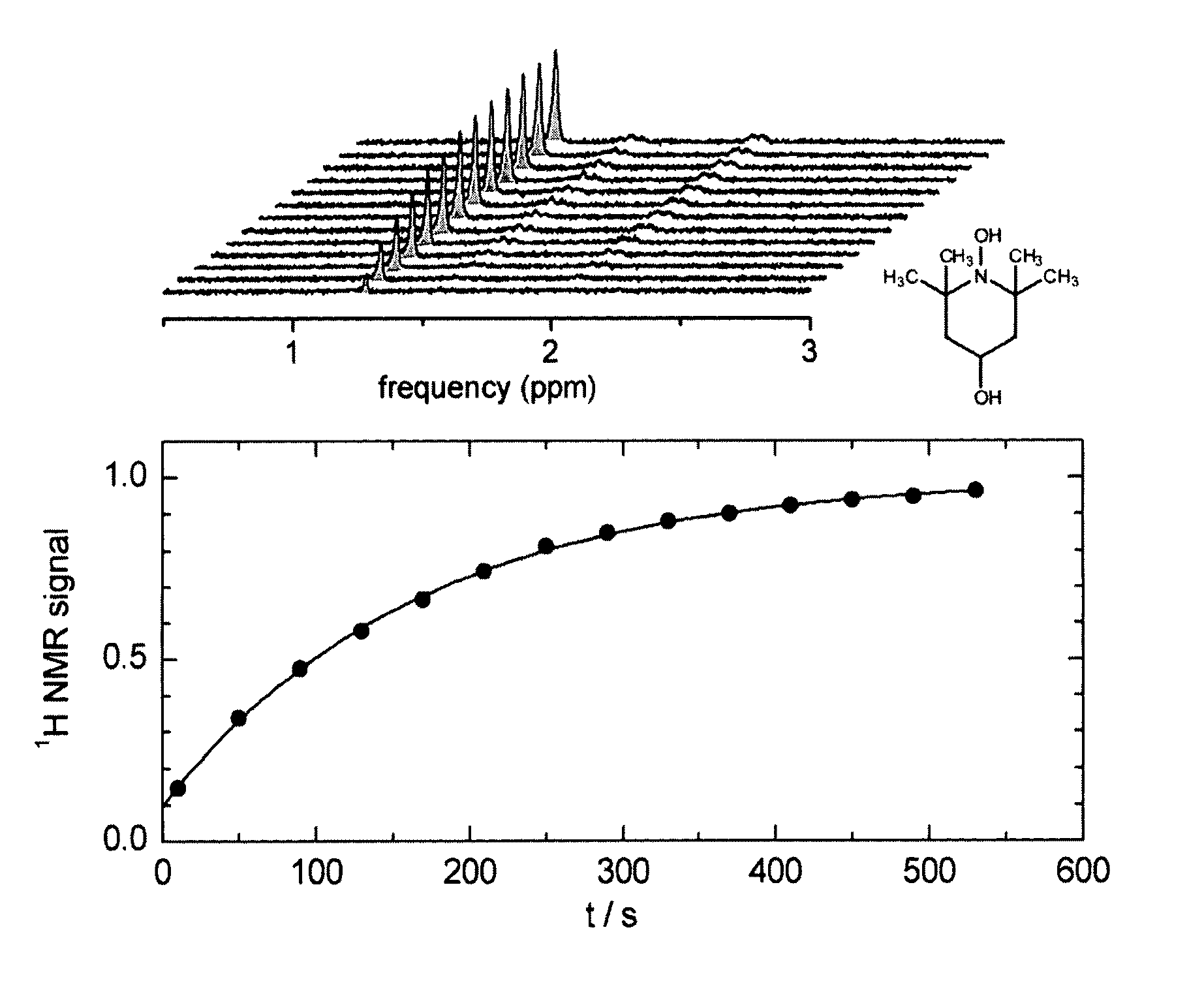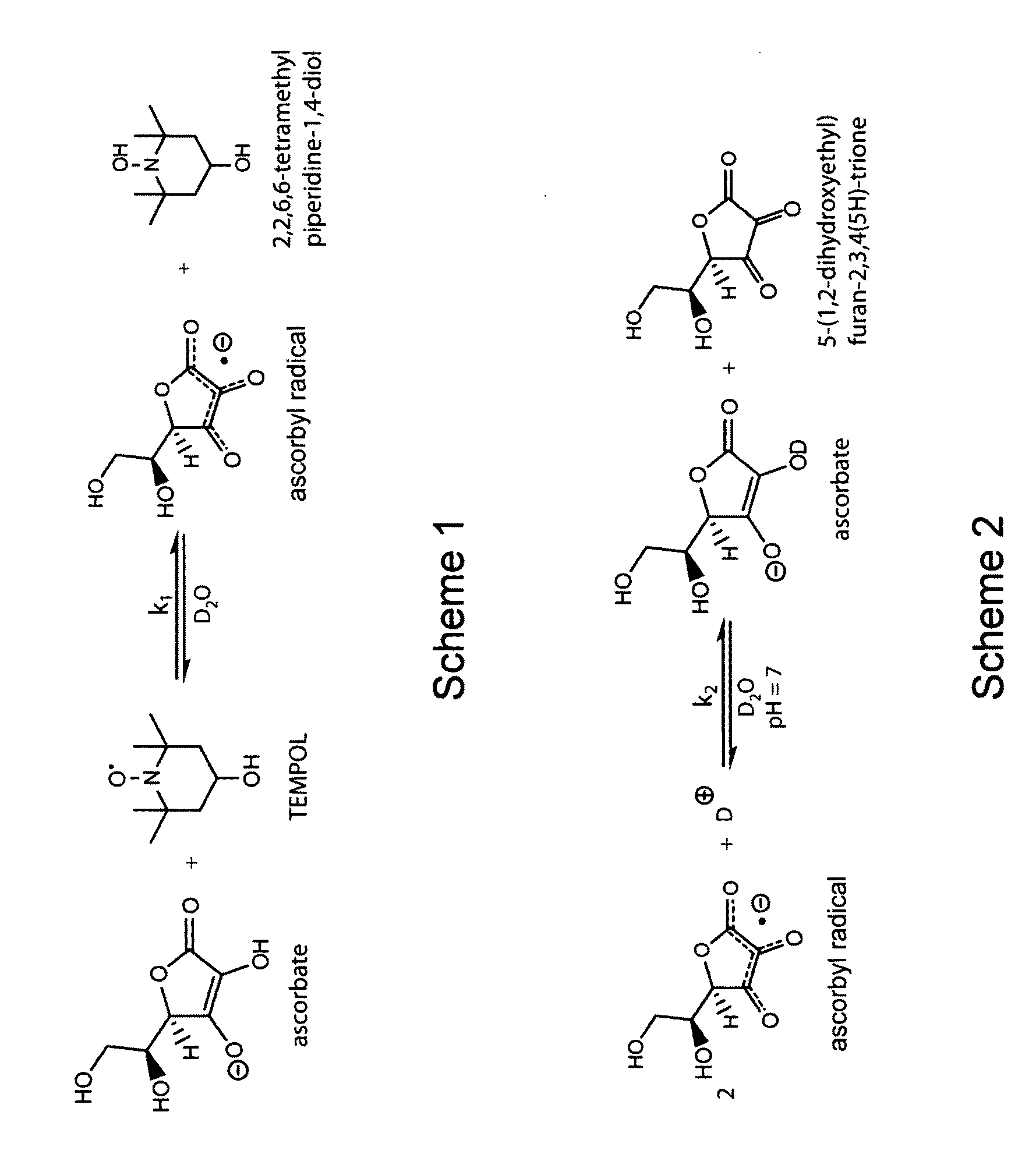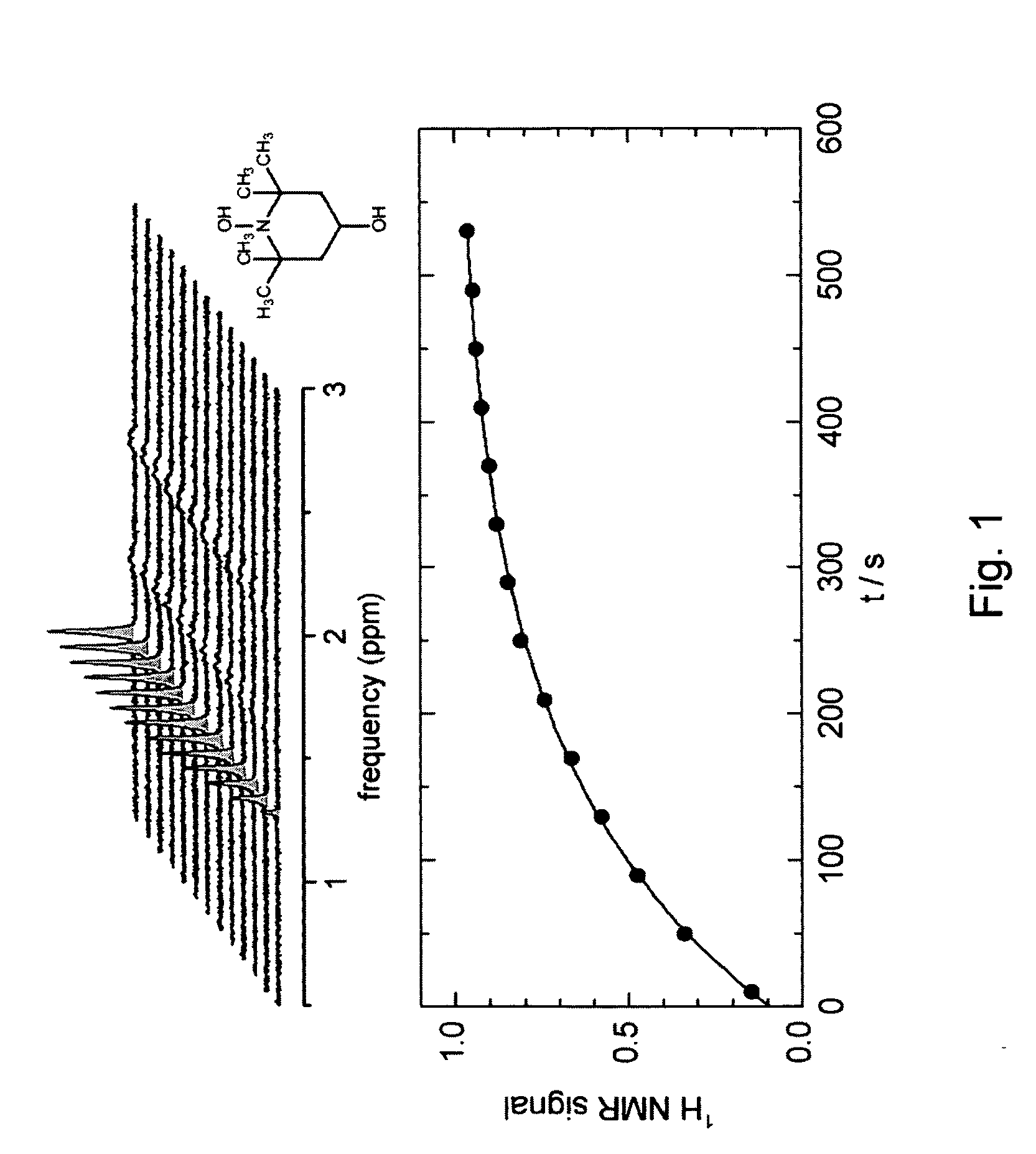Method for NMR spectroscopy or MRI measurements using dissolution dynamic nuclear polarization (DNP) with scavenging of free radicals
- Summary
- Abstract
- Description
- Claims
- Application Information
AI Technical Summary
Benefits of technology
Problems solved by technology
Method used
Image
Examples
Embodiment Construction
[0035]In laboratory tests it was observed how nitroxide radicals such as 4-hydroxy-2,2,6,6-tetramethylpiperidine-1-oxyl (TEMPOL) that are widely used for DNP at low temperatures can be reduced by scavengers like sodium ascorbate (vitamin C) during the dissolution process (Scheme 1) into 2,2,6,6-tetramethylpiperidine-1,4-diol (TEMPOHL), thus extending transverse and longitudinal relaxation times of solutes.
[0036]The frozen beads that contain 30 mM TEMPOL in addition to the solute under investigation (in laboratory tests, acrylic acid, choline and acetylcholine [12], alanine-glycine [13], ubiquitin [14], lithium-6 [15], xenon-129 [16], yttrium-89 [17], etc. were studied) with glass-forming solvents such as glycerol / water mixtures are inserted in the polarizer together with a roughly equal number of frozen beads that contain 3 M sodium ascorbate in D2O.
[0037]During the dissolution process, all beads melt rapidly and the two solutions become intimately mixed, so that the TEMPOL radicals...
PUM
 Login to View More
Login to View More Abstract
Description
Claims
Application Information
 Login to View More
Login to View More - R&D
- Intellectual Property
- Life Sciences
- Materials
- Tech Scout
- Unparalleled Data Quality
- Higher Quality Content
- 60% Fewer Hallucinations
Browse by: Latest US Patents, China's latest patents, Technical Efficacy Thesaurus, Application Domain, Technology Topic, Popular Technical Reports.
© 2025 PatSnap. All rights reserved.Legal|Privacy policy|Modern Slavery Act Transparency Statement|Sitemap|About US| Contact US: help@patsnap.com



